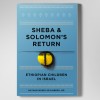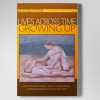Review of Freud in Zion, by Eran Rolnik
I review Freud in Zion hesitantly, as I hope to transmit its intellectual heft, while maintaining its style of a historical thriller.
Why should I have been surprised at the scholarly yet engaging style of Rolnik, this Israeli psychoanalyst?
During my five years in Israel, I was impressed with the depth of knowledge of some of my fellow members of the Israel Psychoanalytic Society, one of the largest of the IPA component societies. The Eitingon Institute (yes, that Eitingon, a member of the Secret Committee and a two time guest at the Wednesday meetings (its first guest from abroad), who founded and funded the Berlin Institute mostly from his family’s furrier funds, who then escaped the Nazis to found the Israel Institute over seventy-five years ago) fills its classes every year with perhaps a dozen candidates, even as an alternate Institute was founded in Tel Aviv and benefits from the Orenstein’s support. In my years as a member and training analyst, I would hear colleagues such as Eliahu Feldman (trained in Brazil) in an hour give the clearest account of Bion I have ever heard; Yolanda Gampel, in her private study group on Klein, give a sensitive, thoughtful and carefully critical reading of the Richard case; Yoram Hazan (who died far too young) describe evenly hovering attention and apres coup (b’de’avad in Hebrew) with the accent of a knowledgable self-psychology (via Chicago’s Jim Fisch); or Emanuel Berman speak authoritatively in his rolling basso on almost any subject psychoanalytic — in Hebrew, English or Polish no less. Emanuel wrote the magnificent socio-historical study of the Israel Psychoanalytic Institute’s transformation, Impossible Education.
Why should I have been surprised at the acuity of Rolnik’s history?
Let me give some flavor of the overall themes in Rolnik’s book, to keep my comments brief, yet somehow to encourage you to read the book to understand much about not only the history of psychoanalysis in Zion, but also its cheek-by-jowl pre-history in Vienna, where Herzl and Freud lived but blocks from each other. Freud in Zion is a challenging account of how ideology can infuse psychoanalytic thinking and technique — at times for the better, at times not for the betterment of our patients. My task is to keep my writing in the shadow of the book so that the book shines forth.
We are almost half-way through this story before psychoanalysts truly take root in the desolate soil of Zion in the 1930’s, that decade of desperation for European Jews. Some 90,000 German Jews alone come to Israel (20% of new arrivals); Edith Jacobson is imprisoned; Richard Sterba escapes with his analysand through an office window, the S.S. on their heels; Bettelheim, not so fortunate, demobilizes his underground army, then is captured at the Czech border and becomes a guest of the S.S. in Dachau. But, Rolnik spends the first half of the book tilling the historical soil, before he sows the seeds of Freud in Zion.
Freud’s 1921 Group Psychology and the Analysis of the Ego was his first work translated into Hebrew (1928), reflecting the early immigrants’ sense that they needed to grasp group psychology to understand what they were doing, would be doing as strangers in this strangely unstrange land. The early Zionists did not seem to let themselves realize that psychoanalysis’s “critical, interpretative and individual” perspective, might be at odds with the constructivist and collectivist conception, particularly amongst the kibbutzniks, that tiny portion of the population (perhaps three percent) who nevertheless grounded the ideology and became leaders of the land for decades.
In 1905, Otto Rank (nee Rosenfeld) insists that psychoanalysis could become a Jewish science. Imagine Freud’s dismay. In contrapuntal style, Freud (1923d) insists in his talk before the B’nai Brith (the only organization outside to psychoanalysis to which he proudly belonged) that the historical fate of the Jews provided them with the capacity for free thought, willingness to fight and quest for truth — those components necessary for a psychoanalytic science (and perhaps any true discipline).
What was it about that fin-de-siecle Vienna, Rolnik asks, that seemed addicted to fatigue and convalescence — led by a monarch for many decades, whose son suicides and whose daughter-in-law travels the rails of Europe with packed steamer trunks and allegedly without wearing underwear — this center of an empire collapsing on itself, what was in the soil or air that produced psychoanalysis and Zionism? But this turn of the century produced several disciplines that focused on the universals of nature and mankind: Einstein’s theories of the universe; socio-logie, that science of how we live together; anthropology, that thing that humankind produces called culture that seems to rule over us, and so on. Even as the political world of Europe imploded, its intellectual life generated creative endeavors that remain with us until today, disciplines that will continue to endure.
The Russian psychoanalytic Institute had some thirty members in 1922-3, an eighth of the IPA membership! They pursued experimental (allegedly psychoanalytic) boarding schools, which even one of Stalin’s children attended. These Russian psychoanalysts emigrated to Germany and many ultimately to Israel, becoming nuclei for psychoanalysis. Moshe Wulff, for instance, while a member of the Vienna Society, hailed from Russia and emigrated to Israel (to become a foil for Eitingen).
And, through Frieda (Fromm)-Reichman’s Heidelberg school, which tried to integrate psychoanalysis and Orthodox Judaism, passed Akiva Ernst Simon (later the director of the Hebrew University School of Education), Erich Fromm, and Leo Lowenthal, later head of sociology at UC Berkeley. Delicious details of our early history.
Martin Buber, the philosopher who became head of sociology at the Hebrew University, opposed Freud’s ideas and ultimately the presence of psychoanalysis at the University where Freud was on the Board of Governors. Buber seemed to fashion himself also as a developmental psychologist, postulating that everyone is born with an “originator” instinct that must be channeled by educators into communion “instinct.” It was an era when many thought they could do all: a philosopher thought he could make developmental theories and critique a discipline in which he had no training. (A tableau of the main lobby on Mt. Scopus has all the members of the Board of Governors present at the opening of the then-barren hill listening to Magnes’ opening remarks. While Freud and Einstein were not present, the artist took liberty to paint them into the scene, a form of time travel, if you will.)
Siegfred Bernfeld (later a founder of the San Francisco Institute) was an adviser to a socialist youth movement in Israel. How involved were the early psychoanalysts in social issues of pre-State Israel? Feigenbaum, appointed the head of psychiatry of the first hospital in Jerusalem, studied the epidemic of suicides among early settlers — some ten percent of all pioneer deaths in the second decade of the century.
The Hebrew University’s animosity towards psychoanalysis came early and endured. But, beyond this perhaps parochial plaint, Einstein, a member of its founding Board of Governors, weighed in on the University when he wrote to discourage Eitingen from trying to find a place there (1934):
“As for the university in Jerusalem, I am sorry to say that this institution , whose importance for the entire Jewish intellectual world is so great, and whose realization I myself worked so hard for, is not exactly in good hands. I have been fighting to replace the administration for years, but have yet to see results. While I have managed to get a Committee of Inquiry convened I have little faith in the ability of the current power that be to bring about real change for the better. So far, the university’s best have also been the ones to turn their backs on the place in bitter anger. Why would you want to put yourself through that?”
Rolnik, a fine historian combing through letters, brings the dark corners of our history to light. Such histories make us squint in pain. And, it is perhaps a wish that such light might cleanse.
Unfortunately, after the first Freud Chair was established in the late 1970’s (and funded mostly by American psychoanalysts, who insisted that the funds be held in New York, not Jerusalem), Joseph Sandler came but left within five years. Anne Marie Sandler recounts that her husband said that had he been treated as well in the first four years as he was in his fifth, he might have stayed (personal communication). Like any named Chair, a selection committee was established to review all candidates for the Chair, who are expected to be both training analysts and well-published in psychoanalysis. As best I know, this selection committee has not met in many years.
The 1930’s, that era of Schreklichkeit for European Jews, brought refugees, some reluctant, to Palestine, including Eitingen. This is the foundational beginning of psychoanalysis in Palestine. Rolnik tells of the personalities (and the tensions) amongst these founders. But, he presses us to think more systematically about the relationship between era and psychoanalytic theory and technique. Rolnik says that the pre-State needs of the community tended towards collectivist thinking, optimism, highly ideological and anti-intellectual, particularly amongst the kibbutznicks. (Shimon Peres, when asked about his hope for the future, responded that without hope there would have been no Israel. The national anthem, Hatikvah, means, “The Hope.”) Yet, Freud’s psychoanalysis is fundamentally individualistic, non-political and imbued with a social pessimism, particular after the wholesale slaughter of World War I, after which Freud elaborated his death drive ideas. How to resolve the tensions between these two states of mind?
Matters get more complicated; this is psychoanalysis after all. Freud’s views of analysis arose primarily from his work with adults. Yet, psychoanalytic interest in early education arose at least with Ferenczi’s precocious 1908 paper on education. That is, while psychoanalysis in the office is one matter, its application to early development and childhood education gives it the kind of societal optimism, a manner of applying principles to improve at least the lives of children, if not of society. Therefore, one can see how early settlers were prepared to start kibbutzim with Marx in one fist and Freud in the other.
Rolnik states clearly his view of psychoanalysis: “…a science of subjectivity….based on universal …mechanisms.. behind.. differences and diversity….” That is, within psychoanalysis is both what is universally deeply human and what makes us different (including the small narcissistic differences or Erikson’s pseudospeciation).
Rolnik also ventures into the early application of psychoanalysis to literary criticism, mostly a matter of what Freud called pathobiography (“reading” the author’s alleged complexes from his work). While popular, it also raised hackles. Bialik thoughtfully zinged back:
“(psychoanalysis’s) fundamental purpose…(is to) cure the psyche….few possess…ability to enter…a writer’s secrets.. only those of great talent and transcendant purpose…”
Bialik, leaves the door ajar, but only for a select few to venture into literary dissection.
And Agnon, that Nobel prize winner who read his acceptance speech in Hebrew in Oslo, sent his wife to Eitingen for treatment. Rolnik reviews how carefully at least one of Agnon’s novels hews to Freud’s Dora case.
In his last chapter, Rolnik takes up the challenge to inquire how the political and cultural milieu affects both psychoanalytic theory and technique. Much of his book persuasively recounts how the pre-State analysts were affected by the circumstances of this raw land (“a land that eats its inhabitants” in the words of one of the spies sent by Moses to survey Canaan) and also how the early settlers were influenced by psychoanalysis. In Zionist/psychoanalytic early history, there was tension between Zionism versus diaspora, like that between true and false identity. There was also the Shoah’s (“Holocaust’s”) shadow, which fostered a greater emphasis on corrective emotional experience (recovering from trauma). The psychoanalytic price of this shift — from Freud’s emphasis on the father/law to mother(land)/fusion, the shift from primary aggression to secondary responses to traumata, from taking responsibility for the maintenance of one’s symptomatic inner life to finding the causes lying in the faults of others — has been overall to deemphasize reflecting on how one maintains one’s misery to how one can achieve a therapeutic experience to overcome the failings of others. (Laplanche might couch this as the difference between the synthetic aspects of psychotherapy versus the dissecting, analyzing aspects of psychoanalysis.)
In his brief account of contemporary Israel, his argument may falter. He makes two observations that need not be causally related. First, he notes the impact of the Shoah, the chronic Arab-Israeli conflict (at least since the 1929 Arab riots), and the Israeli occupation of the West Bank (or Yehuda and Shomron). He suggests that this affects how analysts think and practice. Then, he notes that there has been a shift at least among younger analysts to the role of actual trauma, to an emphasis on the “maternal order… whose romanticism and mysticism smacks somewhat of late nineteenth-century German neo-romanticism and Gnosticism. The latter, in turn, is associated with greater interest in “primitive mental states” and a view of the individual as “passive… mostly reactive to his environment and therefore hardly accountable to his interiority and his mind.” This sounds like Kohut’s distinction between Guilty and Tragic Man. This is also ironic in two ways. First, this view of humankind is diametrically opposite to the Zionist construct of building a “New Man.” Second, it undermines Freud’s emphasis on learning how we contribute to continuing our own miseries even after we have left our parental homes.
But, Rolnik’s description of greater interest in primitive mental states and associated deemphasis of infantile sexuality and primary aggression (and taking responsibility for one’s inner life) sounds like what we see in the United States and possibly in other institutes. Nevertheless, his attempt to connect this to the sociocultural context of Israel (Shoah/wars/occupation) will hopefully be the subject for a future work.
What Rolnik tries to do is rich and valid. If only we had more such scholarly attempts to study the evolution of psychoanalytic thinking in various societies. Bobby Paul’s address to the IPA on culture and psychoanalysis in Chicago is a sophisticated initial approach to this kind of study. Kirsner’s work in Unfree Associations is another, as is Arnie Richards’ presentation on the undercurrent of Communism in early psychoanalytic members and how this affected their ideas.
That Eran Rolnik wrote this one book is enough to be proud about. If we are fortunate, he will write more. Buy it. Read it.



